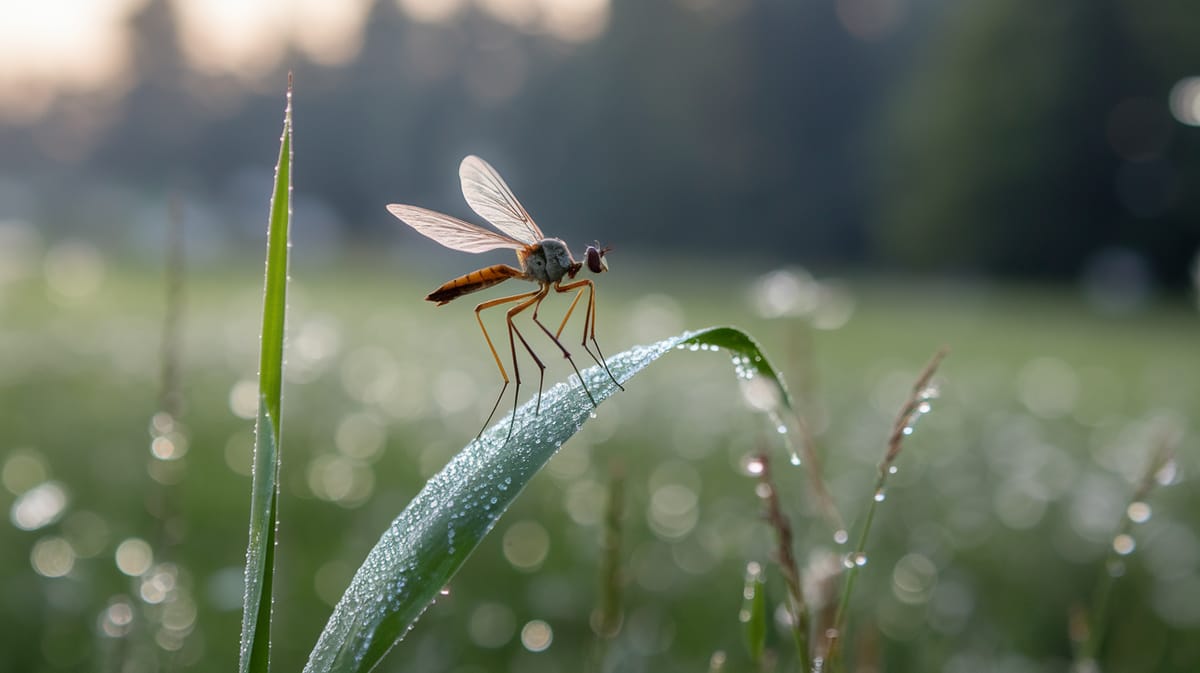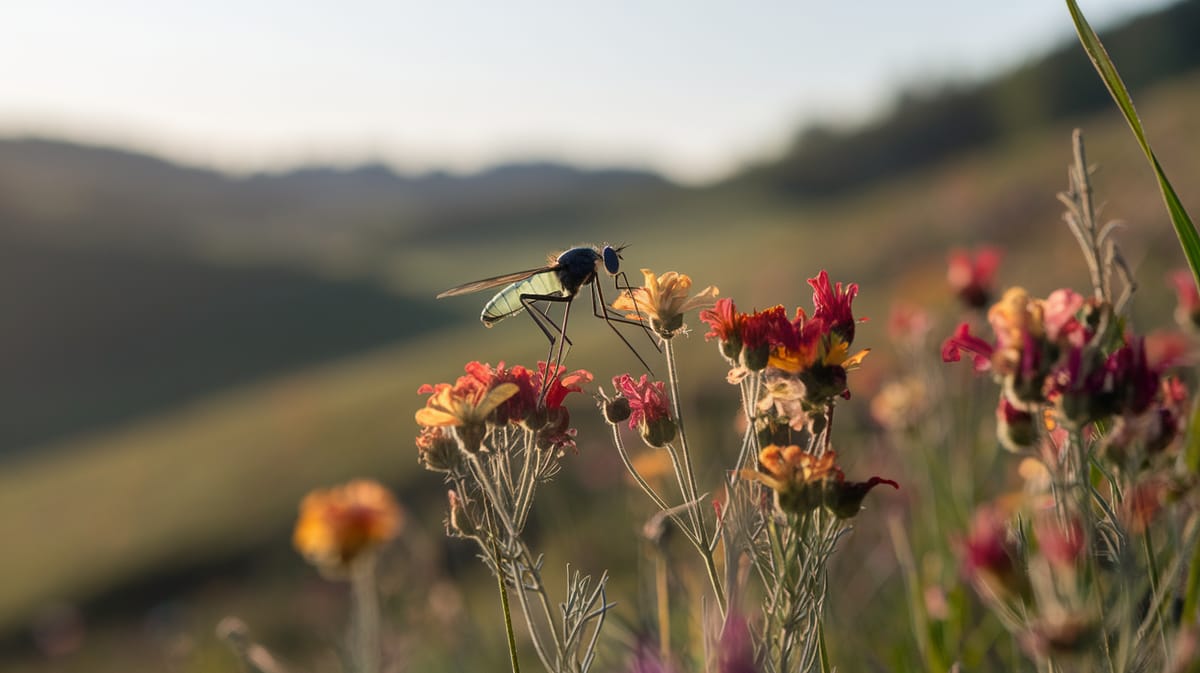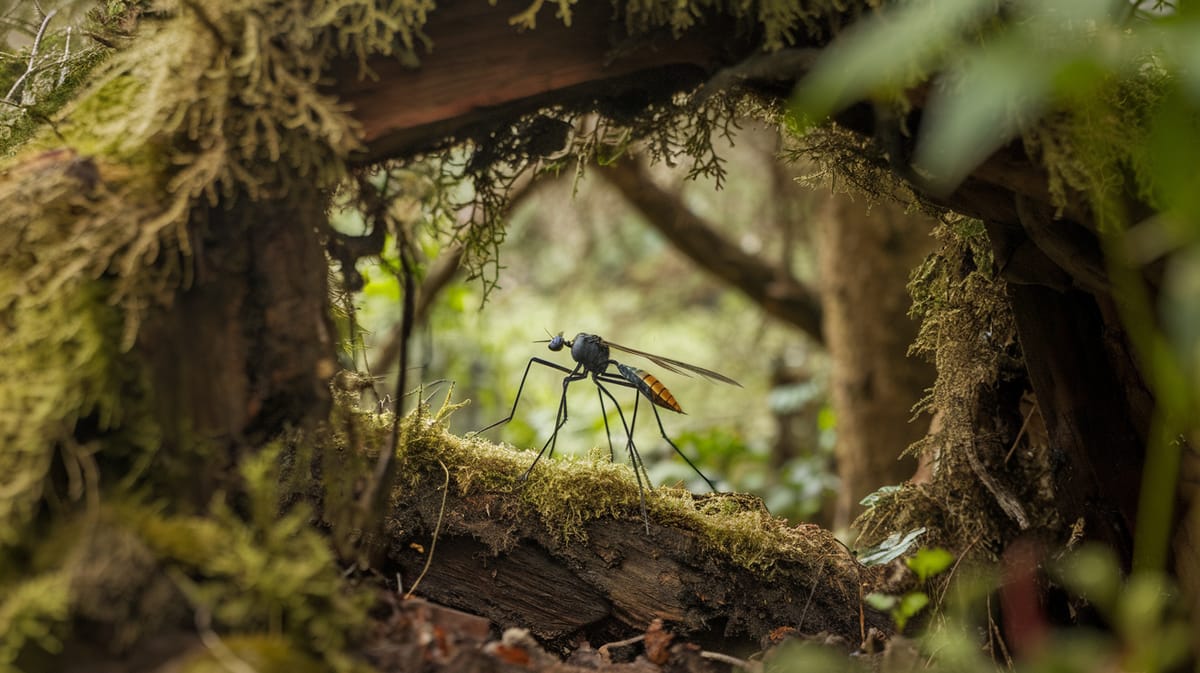Crane Fly
Long-legged and delicate, the Crane Fly often resembles an oversized mosquito but poses no threat. Vital in ecosystems, they aid in decomposing organic matter, enriching soil health.

Key Insights at a Glance
Did You Know?
Taxonomy & Classification
Crane flies are recognized for their delicate, elongated legs and distinct life cycle stages, adapting as effective decomposers in diverse ecosystems. Let's understand the evolutionary journey and classification of these remarkable decomposers.
Species Richness
The Tipulidae family includes over 15,000 species, highlighting their adaptability across various habitats worldwide.
Resilient Evolution
Crane flies trace back to the Jurassic period, surviving through major climatic changes and evolving diverse forms.
Lifecycle and Growth
A remarkable journey of transformation from Egg to Adult.
Egg
Eggs are laid in moist soil or water, developing quickly to hatch into larvae, beginning the crane fly lifecycle.
Larva
Known as leatherjackets, larvae feed on decaying organic matter, aiding in soil aeration and nutrient recycling.
Pupa
Pupation occurs in the soil, where larvae transform into adults, ready to emerge with fully developed wings.
Adult
Adults emerge primarily for mating, often seen in swarms, with short lifespans focused on reproduction.
Dietary Habits
Primarily a detritivore, this insect feeds on decaying organic matter and plant debris, playing a vital role in decomposition.
| DIET TYPE | DESCRIPTION |
|---|---|
| Primary Diet | Consumes mostly decaying leaves, wood, and other plant materials found in moist environments. |
| Secondary Diet | Occasionally ingests nectar and pollen, supplementing its diet with these additional energy sources. |
| Occasional | Rarely feeds on small insects or larvae, usually when more typical food sources are scarce. |

Behaviour and Adaptations
Discover the fascinating traits and adaptations that define the Crane Fly's unique lifestyle and survival strategies.
Long Legs
Crane flies use their long legs to evade predators by quickly escaping from danger.
Minimal Feeding
Adult crane flies have reduced mouthparts, focusing on reproduction rather than feeding.
Short Lifespan
Crane flies live briefly as adults, emphasizing rapid reproduction and species continuity.
Ecosystem Impact
Crane Flies play a vital role in maintaining ecological balance through various contributions.
Soil Aerators
Their larvae help decompose organic matter, improving soil aeration and nutrient cycling.
Food Source
Serve as prey for birds, fish, and other wildlife, supporting diverse food webs.
Moisture Regulation
Larvae contribute to moisture retention in soil, aiding plant growth and ecosystem resilience.
Conservation Challenges
Understanding and addressing the major threats to Crane Fly populations.
Habitat Loss
Urban development and agriculture reduce crane fly habitats, impacting survival and reproduction.
Pesticide Use
Chemical pesticides harm crane fly larvae, reducing their populations.
Climate Change
Changes in temperature and precipitation affect crane fly life cycles and distribution.
Frequently Asked Questions
How long do Crane Fly live?
Adult crane flies live for about 10 to 15 days. Their main purpose during this short lifespan is reproduction. Before reaching adulthood, they spend several months as larvae, feeding and growing in moist environments.
What do Crane Fly eat?
Adult crane flies do not eat. Their larvae, known as leatherjackets, feed on decomposing organic matter, roots, and occasionally grass and crop plants in the soil. This feeding behavior can sometimes cause damage to lawns and crops.
Are Crane Fly poisonous?
Crane flies are not poisonous. They are harmless to humans and pets, lacking venom or stingers. Their resemblance to mosquitoes often causes confusion, but they do not bite or transmit diseases.
Are Crane Fly endangered?
Crane flies are not currently endangered. They are widespread and commonly found in various habitats worldwide. While they face threats from habitat loss and pollution, they are generally abundant and not at immediate risk.
What do Crane Fly symbolize?
Crane flies often symbolize transformation and renewal due to their lifecycle, which includes significant changes from larvae to adults. In some cultures, they are seen as harbingers of rain or good fortune, representing positive changes in the environment.
Do Crane Fly bite?
Crane flies do not bite. They are often mistaken for larger mosquitoes, but unlike mosquitoes, they lack the mouthparts necessary for biting or feeding on blood. They are entirely harmless to humans and animals.
What color are Crane Fly?
Crane flies are typically gray or brown. Their long, slender bodies and delicate wings are often translucent, giving them a subtle appearance that helps them blend into their natural surroundings.
Does a Crane Fly have wings?
Yes, crane flies have wings. They possess two long, delicate wings that allow them to fly. Their wingspan varies, but it is generally larger than that of a mosquito, contributing to their distinctive appearance.
What does a Crane Fly look like?
Crane flies resemble large mosquitoes but are harmless. They have long, slender bodies, elongated legs, and two transparent wings. Their appearance often causes them to be mistaken for mosquitoes, but they are much larger and clumsier in flight.
Is a Crane Fly an insect?
Yes, a crane fly is an insect. It belongs to the order Diptera, which also includes flies and mosquitoes. Like other insects, crane flies have a segmented body, a pair of wings, and six legs, making them a true member of the insect class.
Related Insects
Discover insects with similar characteristics to Crane Fly - including shared habitats, diets, and taxonomic classifications
Share this profile
Help others discover Crane Fly
